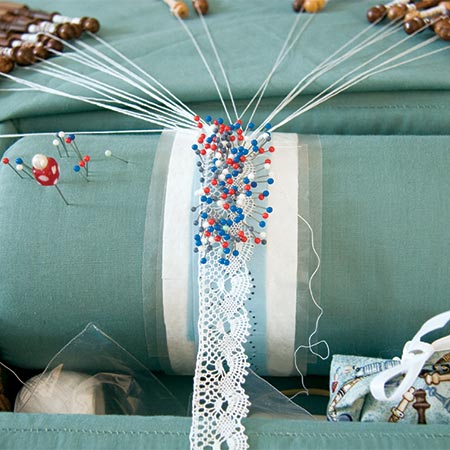Creative Sewing
Bobbin Lacemaking
The history of “hand made lace” as we know it, begins in the 16th century. It is impossible to start an authentic history before this time. But there are many claims to the beginning of lace making in many countries as early as the 1500s and bobbin lace appears in some Dutch portraits around the 1580s. The oldest lace pattern book known is in the library of Arsenal in Venice and again there are very early portraits showing lace used in the costume. So it is thought then that Italy holds the honour of introducing bobbin lace to the world.
There are many earlier stories of lace in costume and church vestments, but they are a cutwork lace and needle laces, darned netting and drawn-work. Although there are many famous needle laces such as “Alencon” I will stay to the bobbin laces.
In the 17th century, every garment was trimmed with lace. Sleeves were trimmed with lace, lace hung from the tops of men’s boots, and tips of the garters were edged with lace. The instep of court or dress shoes was adorned with a large rosette of lace. Ladies wore gloves, caps, aprons, and capes in double and triple tiers. Christening suits, cradles, bed and household linens were all richly trimmed with lace. Lace continued in popularity to the 19th century.
As people moved around Europe, taking their lace-making skills with them, each area became known for its particular type of lace. Many northern countries in Europe learned the art of bobbin lace-making from the Netherlands, through the refugees that fled the religious persecution of the 16th century. Eventually, lace making became an important part of children’s education and is still taught in lace schools today.
Read more in our Summer 2009 issue.
Article by Joan Wilson
The Simcoe County Lacemakers
Innisfil, Ontario
705.428.0638
[email protected]



